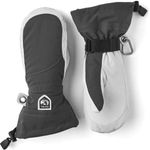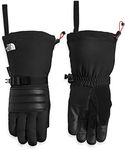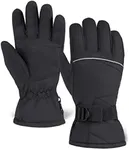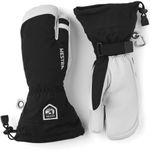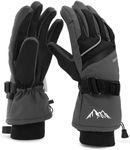Buying Guide for the Best snowboarding gloves
Choosing the right snowboarding gloves is crucial for ensuring comfort, warmth, and dexterity while you're out on the slopes. The right pair of gloves will keep your hands warm and dry, allowing you to focus on your performance and enjoy your time snowboarding. Here are some key specifications to consider when selecting snowboarding gloves, along with explanations to help you make the best choice for your needs.InsulationInsulation is what keeps your hands warm by trapping heat. This is important because cold hands can quickly ruin your snowboarding experience. Insulation can be made from materials like down, synthetic fibers, or a combination of both. Down insulation is lightweight and very warm, but it can lose its insulating properties when wet. Synthetic insulation is bulkier but retains warmth even when damp. If you tend to get cold easily, look for gloves with higher insulation levels. If you run warm or snowboard in milder conditions, lighter insulation may be sufficient.
WaterproofingWaterproofing prevents moisture from getting into your gloves, keeping your hands dry. This is crucial because wet hands can become cold quickly, leading to discomfort and potential frostbite. Waterproofing is typically achieved through materials like Gore-Tex or other waterproof membranes. Higher-end gloves often have better waterproofing capabilities. If you snowboard in wet or snowy conditions, prioritize gloves with high waterproof ratings. For drier conditions, moderate waterproofing may be adequate.
DexterityDexterity refers to how easily you can move your fingers and perform tasks while wearing the gloves. This is important for handling gear, adjusting bindings, or using your phone. Gloves with more dexterity allow for better hand movement but may sacrifice some warmth. If you need to perform precise tasks frequently, look for gloves that offer a good balance of warmth and dexterity. If warmth is your primary concern, you might opt for bulkier gloves with less dexterity.
FitFit is how well the gloves conform to your hands. A good fit is important for comfort and performance. Gloves that are too tight can restrict blood flow and make your hands cold, while gloves that are too loose can let in cold air and snow. To find the right fit, try on gloves and make sure you can move your fingers comfortably without too much extra space. Consider the type of snowboarding you do; for example, park riders might prefer a snugger fit for better control, while backcountry riders might prioritize a looser fit for layering.
DurabilityDurability refers to how well the gloves can withstand wear and tear. This is important because snowboarding can be tough on gear, and you want gloves that will last. Durable gloves are typically made from high-quality materials like leather or reinforced synthetic fabrics. If you snowboard frequently or in rough conditions, look for gloves with reinforced palms and fingers. If you snowboard occasionally or in gentler conditions, standard durability may be sufficient.
Cuff StyleCuff style refers to the length and design of the glove's cuff, which affects how well it integrates with your jacket. This is important for keeping snow and cold air out. There are two main types: under-cuff and over-cuff. Under-cuff gloves fit inside your jacket sleeves and offer a more streamlined look, while over-cuff gloves go over your jacket sleeves and provide extra protection against snow. Choose under-cuff gloves for a sleeker fit and over-cuff gloves for better protection in deep snow.

